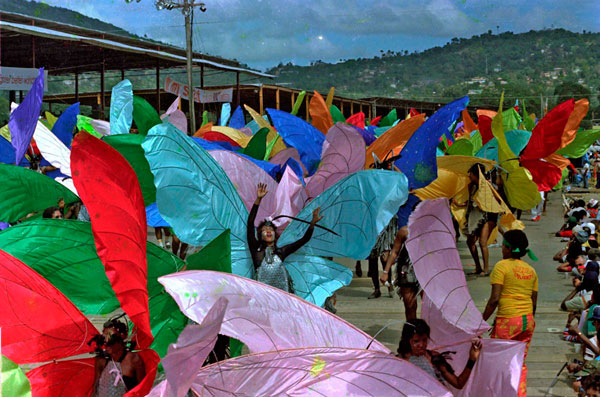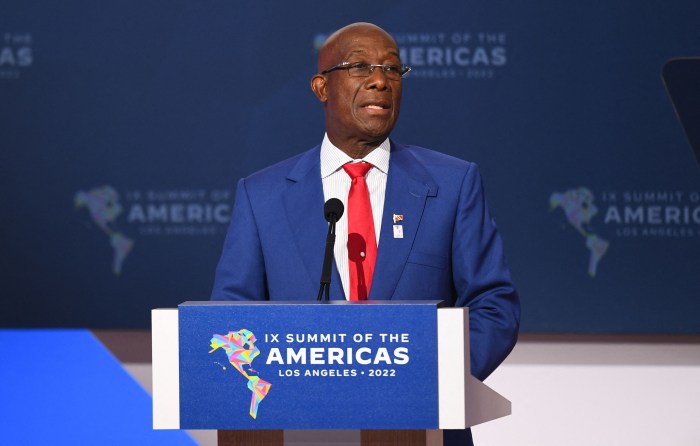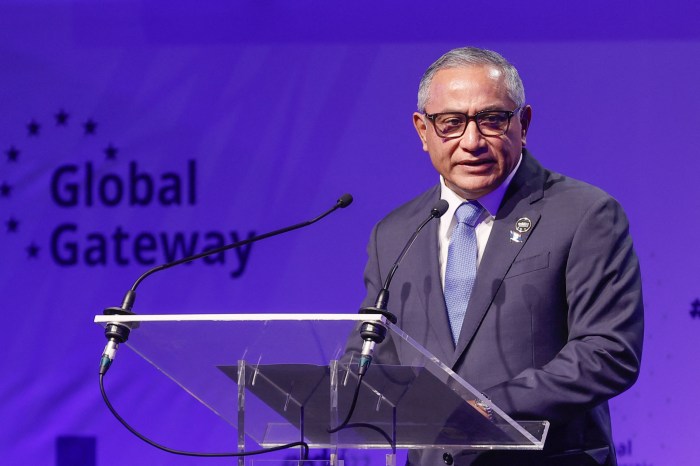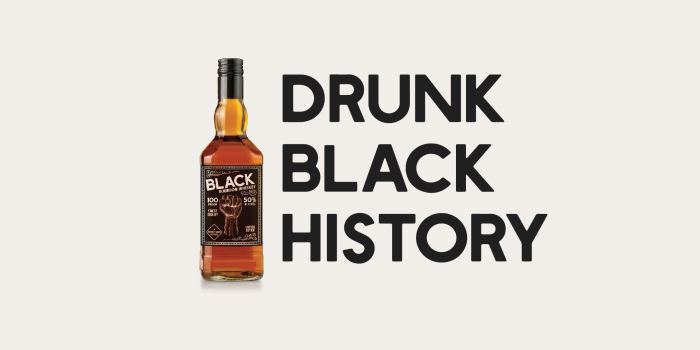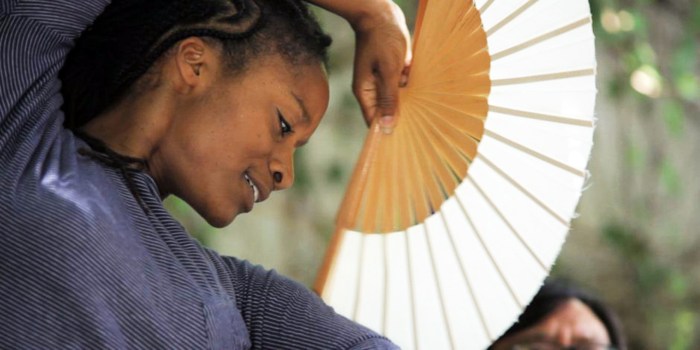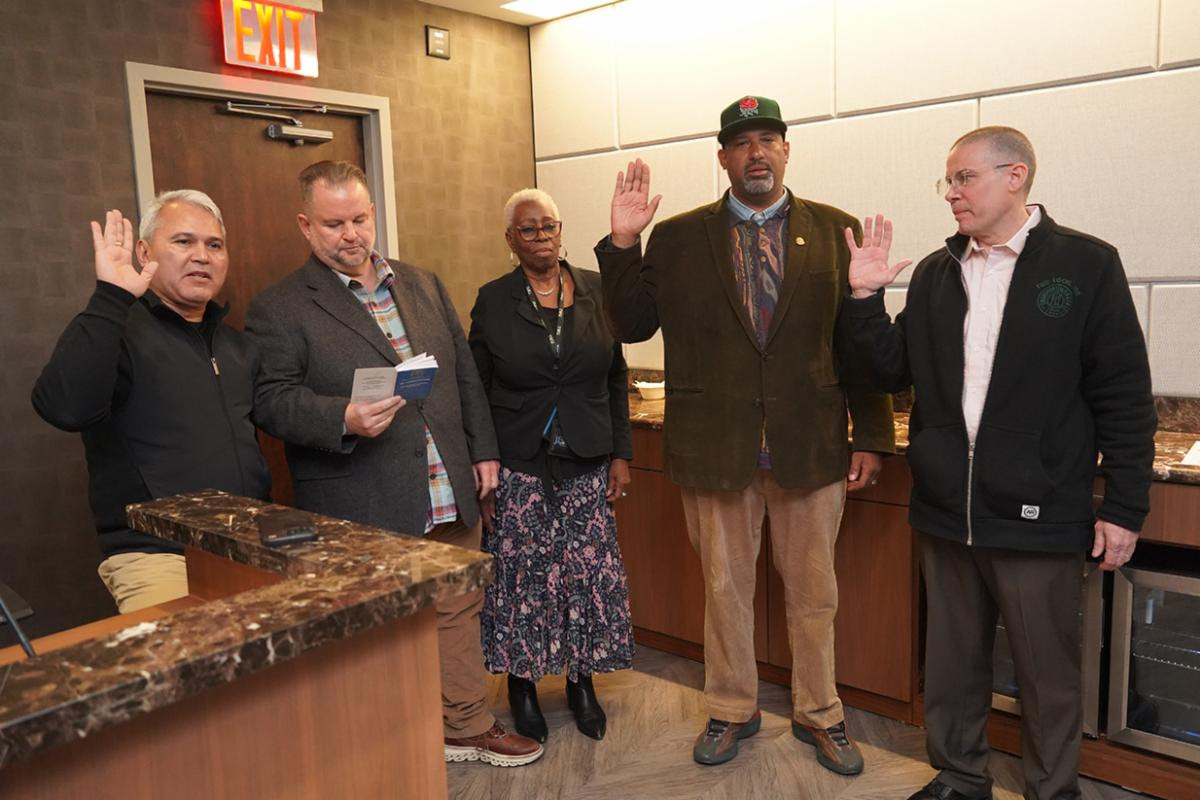A 15th award garnered in October for “Mas Man,” a film about the work of artist / designer Peter Minshall, produced and directed by Dalton Narine, has lent added credence to what has been seen as unusual impact this film has made on the international circuit.
Long Beach International Film Festival (longb
Dr. Daniel Walker, scholar, filmmaker and founding director of the illustrious festival, spoke about the film’s appeal and the jury’s decision: “As a person who wrote a book about the political dimensions of festivals in Cuba and New Orleans, I know I had a high bar to impress, and the film did all that and more.”
Narine says of “Mas Man,” that it is, “above all, a fine arts film, though juries at 50 or so festivals around the world, had promoted it in every category imaginable.”
Still, with the film’s latest success, coupled with the tourism prize it received at Document Arts Fest in Bucharest, Romania (as well as its screening in Cannes) both in the past year, the 15 prizes across the board amassed by “Mas Man” attest to the film’s potency on several levels. Those prizes include Best Film, Best Director, Best Cinematography and special awards.
Narine says he pushed the film in the Los Angeles area because Don Mischer, a Hollywood producer featured in the film, was a key figure in tapping Minshall, the masman himself, for the Barcelona Olympic Games’ opening ceremonies in 1992.
Minshall reprised his role as an artistic director of the Emmy award-winning opening ceremonies at the 1996 Atlanta Games, and Salt Lake City Winter Games in 2002, for which he received an Emmy.
That “Mas Man” made an auspicious debut speaks to its staying power.
A full-house screening in New York City’s Greenwich Village, proved that Narine and his crew could transform a pastiche of scenes that won the People’s Choice Award for Best Feature Documentary at the 2009 Trinidad and Tobago Film Festival to the top tier of the New York Film Festival in 2010.

“In Trinidad, we had a week to put it together,” Narine recalls, “just so the public would get an inkling regarding what the noise was about. It was a ways from being a film. Not even a work in progress. Call it ideas.”
Narine credits not only Callaloo Company’s Peter Minshall and Todd Gulick, but also filmmakers Benedict Joseph and Danielle Dieffenthaller, editor Eduardo Siu, Pennelope Beckles, Trinidad and Tobago Film Festival founder/director Dr. Bruce Paddington, as well as Trinidad and Tobago Film Company and GISL for their contribution, particularly as the film underwent a period of gestation.
Back then, to accommodate festivals, it required Narine to transfer “Mas Man” to HD hard drive and Blu-ray.
“Today, the medium is Digital Cinema Package (DCP),” Narine says, “and we had it mounted, at huge cost, in Hollywood, where the film had a screening at the legendary Ricardo Montalban Theater at Hollywood and Vine.”
“Now, it is screenable at any movie house anywhere in the world,” Narine says.
“Mas Man” has been screened in Asia, Africa, North America, South America, Europe, Australia and the Caribbean. The film received a Best Caribbean Film award in 2012 at a red carpet festival in Antigua that included a couple of American actors, a filmmaker from India, and the chair Columbia University’s School of the Arts film division. It also prompted a stir of excitement in Jamaica media a few months ago.
But to Narine’s delight, a few Trinidadian students at US universities have studied the film for their thesis toward a master’s degree. And a group of UWI students chose the work for a class project a couple of years ago.
“Mas Man,” along with eight earlier Narine documentaries about T&T’s mas / pan culture, are available at masma



